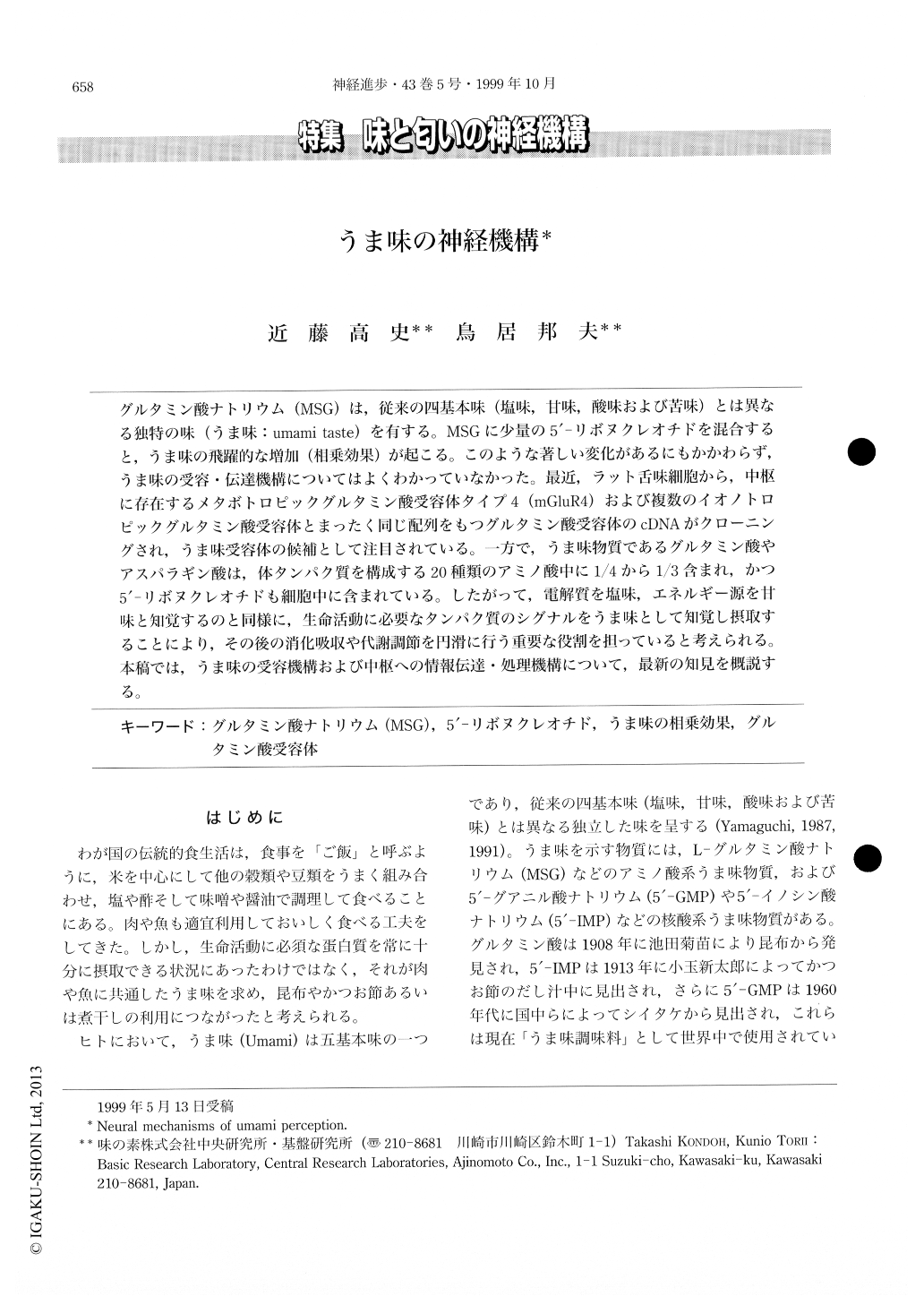Japanese
English
- 有料閲覧
- Abstract 文献概要
- 1ページ目 Look Inside
グルタミン酸ナトリウム(MSG)は,従来の四基本味(塩味,甘味,酸味および苦味)とは異なる独特の味(うま味:umami taste)を有する。MSGに少量の5′-リボヌクレオチドを混合すると,うま味の飛躍的な増加(相乗効果)が起こる。このような著しい変化があるにもかかわらず,うま味の受容・伝達機構についてはよくわかっていなかった。最近,ラット舌味細胞から,中枢に存在するメタボトロピックグルタミン酸受容体タイプ4(mGluR4)および複数のイオノトロピックグルタミン酸受容体とまったく同じ配列をもつグルタミン酸受容体のcDNAがクローニングされ,うま味受容体の候補として注目されている。一方で,うま味物質であるグルタミン酸やアスパラギン酸は,体タンパク質を構成する20種類のアミノ酸中に1/4から1/3含まれ,かつ5′-リボヌクレオチドも細胞中に含まれている。したがって,電解質を塩味,エネルギー源を甘味と知覚するのと同様に,生命活動に必要なタンパク質のシグナルをうま味として知覚し摂取することにより,その後の消化吸収や代謝調節を円滑に行う重要な役割を担っていると考えられる。本稿では,うま味の受容機構および中枢への情報伝達・処理機構について,最新の知見を概説する。
Monosodium L-glutamate (MSG) elicits a unique taste sensation termed`umami' taste that is independent of other basic tastes, i.e., salty, sweet, sour and bitter. The umami taste sensation is notably potentiated by the presence of 5'-ribonucleotides, such as guanosine5'-monophosphate (5'-GMP) and inosine5'-monophosphate (5'-11MP). In spite of the strength of this effect, little is known about the transduction mechanisms of glutamate and 5'-ribonucleotides in taste receptor cells and the signal transmission mechanisms through gustatory relays to the brain.

Copyright © 1999, Igaku-Shoin Ltd. All rights reserved.


